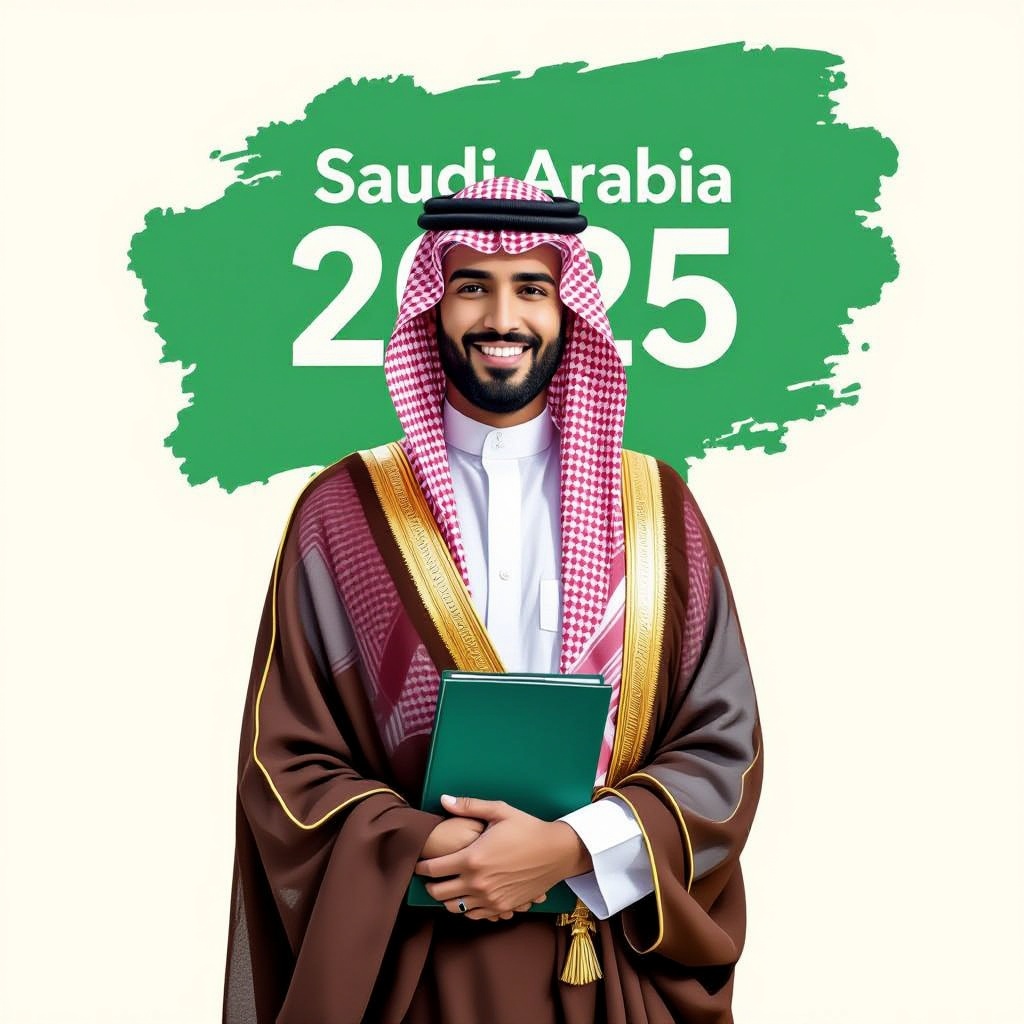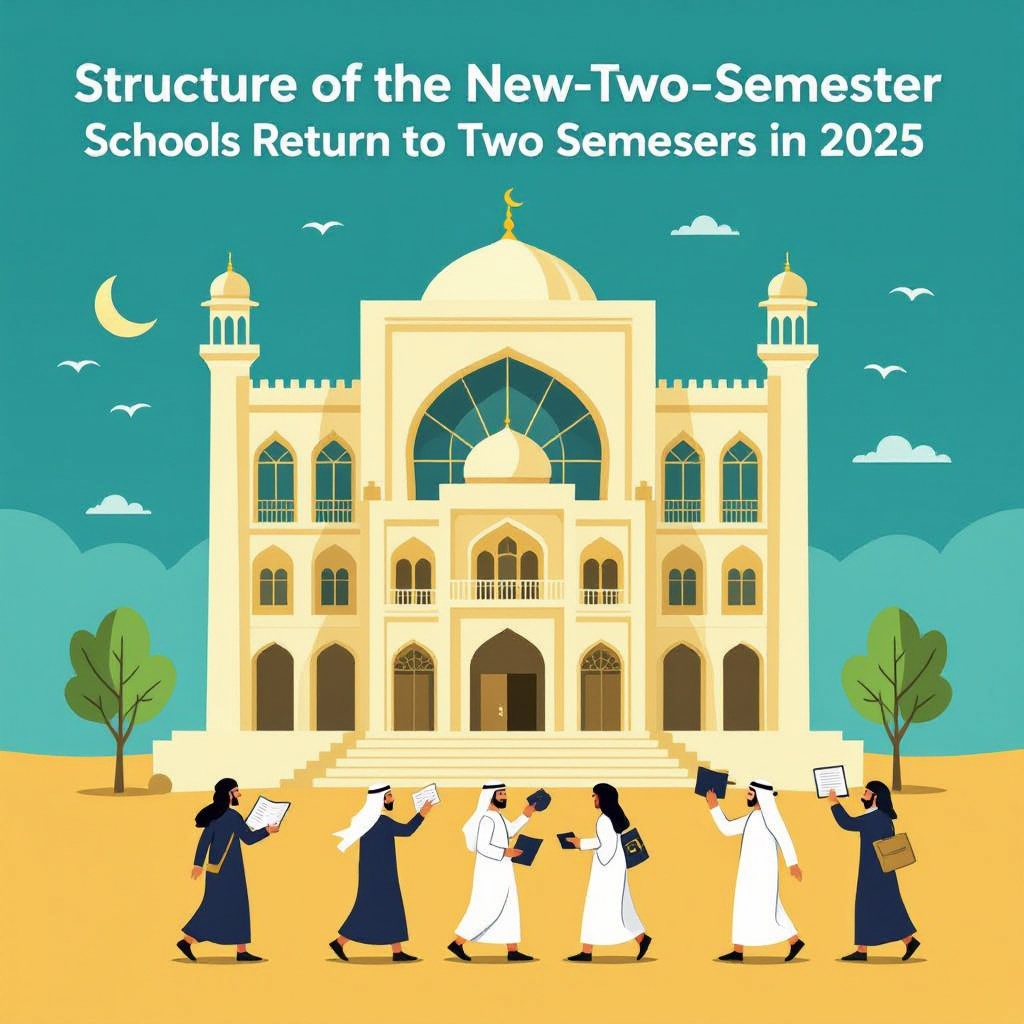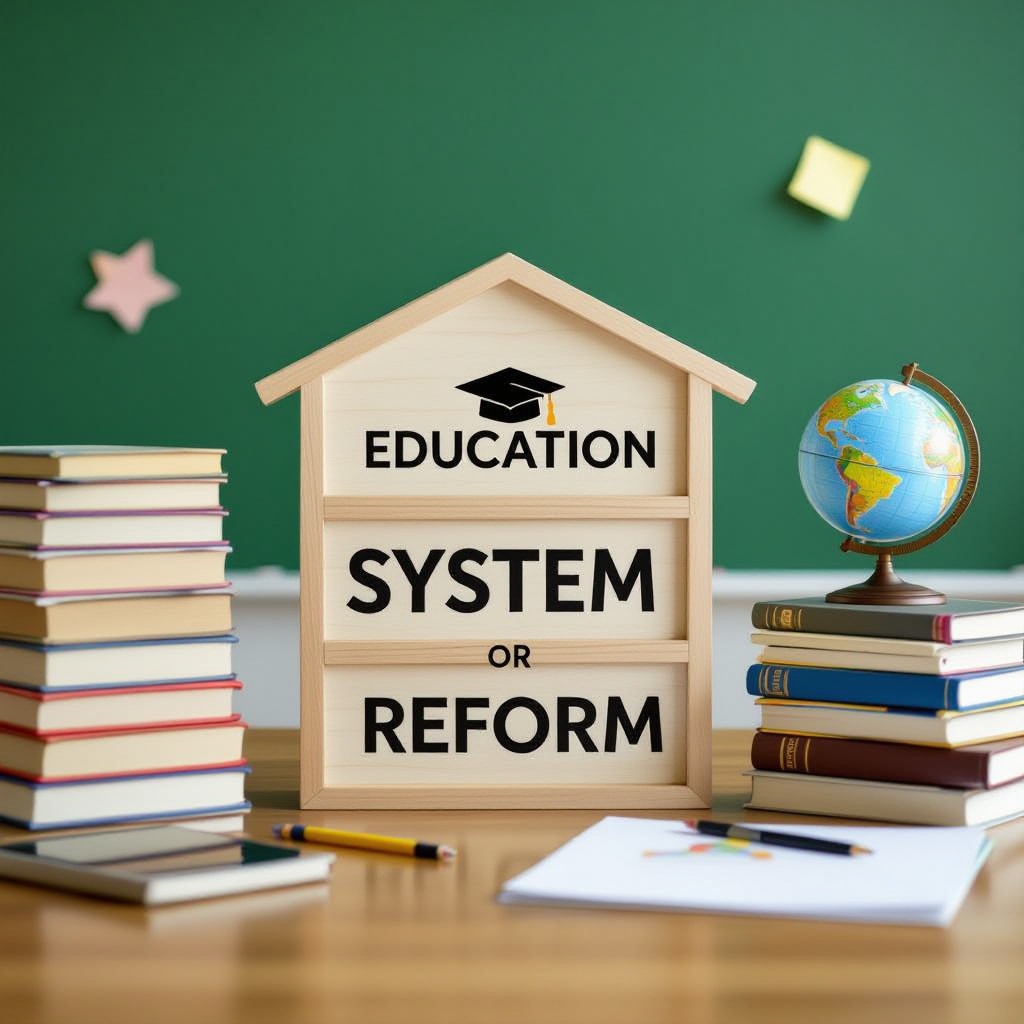Saudi Arabia’s shift to a two-semester academic system by the 2025–2026 school year brings its education in line with global benchmarks and considers cultural aspects. This decision, rooted in feedback and Vision 2030 goals, seeks to refine the educational structure for better learning and adaptability.
Key Takeaways
- From the 2025–2026 school year, all public schools in Saudi Arabia will switch to a two-semester system.
- This change boosts academic flexibility and aligns with major cultural events and regional demands.
- It forms part of Saudi Arabia’s Vision 2030 plan, aiming to modernize education and emphasize lifelong learning.
- Private and international schools retain the freedom to determine their own academic schedules.
- The new system includes strategic breaks and aligns with international standards, respecting local traditions.
Saudi Arabia Reverts to a Two-Semester School Year in 2025
Saudi Arabia officially shifts to a two-semester school system in the academic year 2025–2026. This transition, confirmed by the Saudi Cabinet, involves all public schools and aims to fine-tune educational frameworks in line with Vision 2030 objectives. The Ministry of Education has undertaken extensive evaluations and gathered stakeholder feedback, leading to this pivotal decision.
The new academic calendar reform is designed to create a streamlined educational experience. This approach is expected to enhance the learning process by providing extended, focused periods of study.
Stakeholders, including educators and parents, have praised this move. It aligns with best practices observed in many developed countries. Curious about how other countries have implemented similar changes in their educational systems? You might find it interesting to explore more insights on education strategies worldwide.

Reasons for the Academic Calendar Shift
The Ministry of Education is transitioning to a two-semester academic calendar to promote academic flexibility and align with regional needs. This change helps accommodate important events like Hajj and Ramadan, addressing concerns that didn’t mesh well with the previous structure.
Stakeholder feedback through surveys played a crucial role in driving this educational reform. Many preferred a two-term system, highlighting a more sustainable pace and better alignment with family routines. The three-term model, while initially aligning with OECD and G20 standards, faced criticism for its rigidity. Areas with large student populations found it particularly challenging.
This shift is also part of Saudi Arabia’s Vision 2030 initiative, aiming to modernize educational systems and promote lifelong learning. For more insights into global educational systems and their impact, check out the relevant analysis on BBC.

Structure of the New Two-Semester Academic Calendar
The 2025–2026 academic calendar marks a significant shift to two main semesters. Proposed changes reflect an emphasis on strategically timed breaks. The year kicks off on August 24, 2025, across many regions, though places like Makkah and Jeddah may have slightly different schedules.
Students will benefit from at least nine specified breaks throughout the year. These breaks include national holidays, Eid, and Foundation Day, ensuring that important cultural events receive their due recognition. The annual schedule also aligns with international standards by maintaining 180 instructional days. This consistency ensures academic quality isn’t compromised and supports a stable educational environment.
Each semester closes with a summer holiday, aligning with traditional educational rhythms. This well-structured calendar allows students to experience uninterrupted study periods before breaking for important occasions. Ramadan falls within the term, creating an opportunity for a break, reflecting the cultural significance of this period.
Central to this redesign is precision timing to maximize educational outcomes whilst respecting cultural observances. The move also resembles international models, aiming to optimize learning and cultural balance in Saudi Arabia’s education system. For more on the global context of academic calendars, you might find the UNESCO Education page insightful.

Impact by School Type and Region
The shift back to a two-semester model primarily affects public schools throughout Saudi Arabia. Private and international schools, as well as higher education institutions, maintain the liberty to structure their academic year as they see fit. This flexibility lets them adapt their schedules to serve their unique educational goals effectively.
In regions such as Jeddah and Makkah, where student populations are significantly larger, authorities will introduce staggered start dates. This strategy aims to manage the influx of students efficiently, minimizing congestion and ensuring a smooth transition.
Public and private schools face differing realities with these changes:
- Public Schools: All public schools will uniformly embrace the two-semester system. This transition aims to standardize education across the country, promoting educational equality among students from various regions.
- Private and International Schools: Retaining the capacity to choose their calendar allows these schools to cater to specific educational missions and priorities, such as international curricula.
The implementation of staggered school start dates in densely populated regions will offer several advantages:
- Decreased Traffic Congestion: Spacing out start dates can ease traffic during peak times, contributing to a smoother daily routine for students and parents.
- Resource Allocation: Schools can better manage resources, ensuring teachers and infrastructure are not overwhelmed.
- Localized Tailoring: Scheduling adaptations consider local needs, personalizing the academic landscape for diverse communities.
These decisions collectively contribute to enhancing educational quality while respecting regional and institutional nuances. For additional insights on global education trends, you might want to explore resources from OECD Education.
Curriculum Innovations and Developments
The exciting curriculum reform in Saudi Arabia will see the introduction of an AI curriculum as part of the shift back to a two-semester school year in 2025. This new program aligns with Vision 2030, focusing on enhancing academic rigor while preparing students for the challenges of a future-ready workforce. AI lessons will be tailored to suit different age groups, ensuring that students of all levels engage with content suitable for their understanding.
Partnerships with bodies like the Saudi Data & Artificial Intelligence Authority (SDAIA) guarantee that the learning materials and practices are top-notch. The inclusion of AI in education aims to elevate skill development, fostering an environment where students can thrive. This approach will also contribute to student well-being by instilling confidence in their future preparedness.
With these changes, students will develop essential skills like critical thinking and problem-solving, which are vital in an AI-driven world. Some key aspects of the curriculum reform include:
- Age-appropriate AI modules that cater to different grade levels.
- Collaboration with experts like SDAIA to ensure quality education.
- Focus on both academic and personal development to boost student well-being.
The educational landscape in Saudi Arabia is undergoing significant transformations aimed at building a knowledgeable and well-prepared youth. For insights on global AI educational trends, you might check out edutopia.org.

International Comparisons and Educational Insights
Comparing academic structures globally, Saudi Arabia’s former three-term system matched international norms with its 180–185 instructional days. Yet, it often lacked the adaptability seen in some countries. Shifting back to a two-semester format aligns more closely with global educational rhythms and accommodates local cultural nuances. The Ministry emphasizes that quality education relies on the cornerstones of effective teaching, a strong curriculum, governance, and a supportive learning environment, rather than the mere division of the academic year.
While OECD comparisons provide context on international educational standards, it’s fundamental to remember that aligning with these benchmarks involves more than adjusting the semester count. Countries focusing on these foundational factors often see greater success. For instance, organizations like the OECD highlight that teacher quality and curriculum development significantly contribute to educational outcomes. You can explore more about educational frameworks on platforms like OECD directly.
FAQs
Why is Saudi Arabia shifting back to a two-semester system?
The shift is part of Saudi Arabia’s Vision 2030 education reforms. It aims to improve learning outcomes, provide longer focused study periods, and better align the academic calendar with cultural events like Hajj and Ramadan.
When will the new two-semester system start?
The new academic calendar will be implemented starting the **2025–2026 school year**, beginning on **August 24, 2025** in most regions. Some areas, such as Jeddah and Makkah, may adopt staggered start dates to manage large student populations.
Will private and international schools in Saudi Arabia follow the same system?
No, the reform applies only to public schools. Private and international schools can still decide their own academic schedules based on their curricula and global frameworks.
How many breaks will students get under the new calendar?
Students will have at least **nine scheduled breaks**, including **Eid holidays, Foundation Day, and national holidays**. These breaks ensure that cultural and religious events are respected while maintaining 180 instructional days.
What curriculum changes come with this reform?
A major highlight is the introduction of an **AI curriculum** designed in partnership with SDAIA. It will be age-appropriate, equipping students with future-ready skills like problem-solving, critical thinking, and digital literacy.
How does this change benefit students and parents?
The two-semester system allows for a more sustainable study pace, fewer disruptions, and alignment with family routines. It also reduces scheduling conflicts during Hajj and Ramadan, improving overall quality of life for students and parents.
How does this compare with international education systems?
Many developed countries already follow two-semester structures with 180 instructional days. Saudi Arabia’s move ensures global alignment while preserving local cultural rhythms, blending international best practices with regional needs.
Sources:
Soul of Saudi – Saudi Arabia Two-Term Academic System 2025
Gulf Business – Saudi New Academic Year Date for 11 Regions
Gulf News – Saudi Arabia Returns to Two-Semester School Year, Unveils Four-Year Academic Roadmap
Expatica – School Holidays in Saudi Arabia
Times of India – Saudi Arabia Announces 2025/2026 School Start Dates and New AI Curriculum: Key Details Every Parent Must Know
Finalsite – Term Dates 2025-2026
Economic Times – Saudi Arabia Reverts to Two-Semester Academic Year for Public Schools Starting 2025
Time Out Riyadh – Saudi Academic Calendar 2025-26
